If you have land to fence, why not consider planting an edible hedge?
Instead of just having a boundary, you can grow a two-dimensional orchard or even food forest type system along the edge of your property, then enjoy the sweet results.
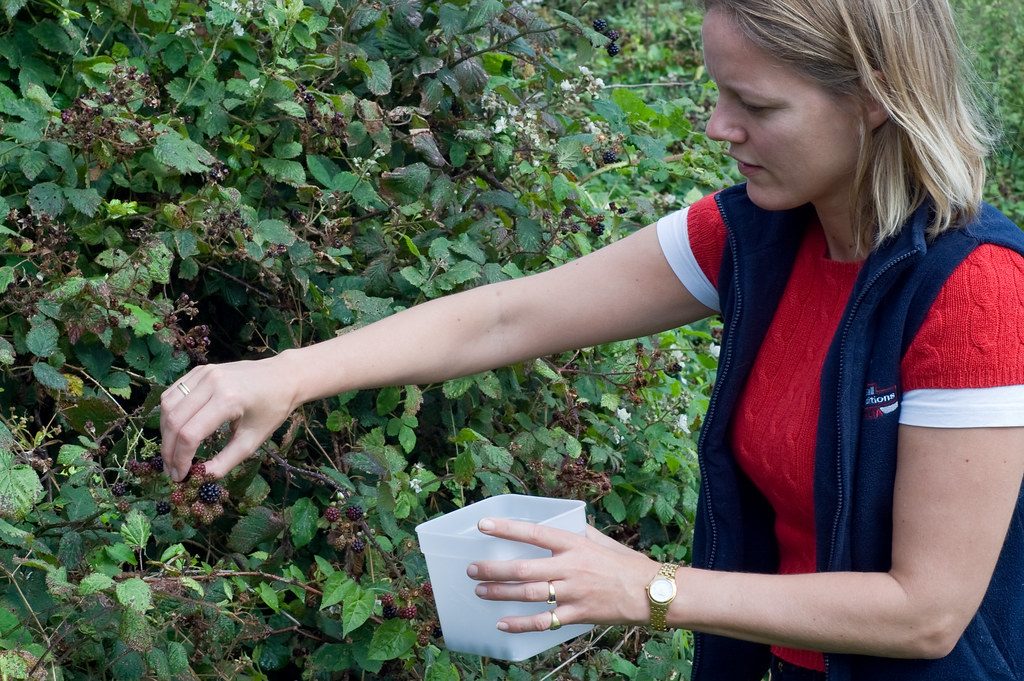
Picking berries from your hedge makes a lot of sense
Here’s a nice overview of edible hedge plants for temperate climates:
Edible hedges can also act as wind breaks:
You can even train mango trees into hedges:
My favorite system I’ve seen so far is Andrew’s permaculture “fedge:”
This week I should be getting my land cleared with a Bobcat, then it’s time for me to start planting.
Since I only have a half acre and would like lots and lots of food production, dedicating the boundaries to non-edible plants doesn’t make sense. Instead, I plan to test different species of plants and see which ones can be used as hedges.
I really like the “jam pieces in the ground” method of planting hedges, as I did with Gliricidia sepium on our old rental property.
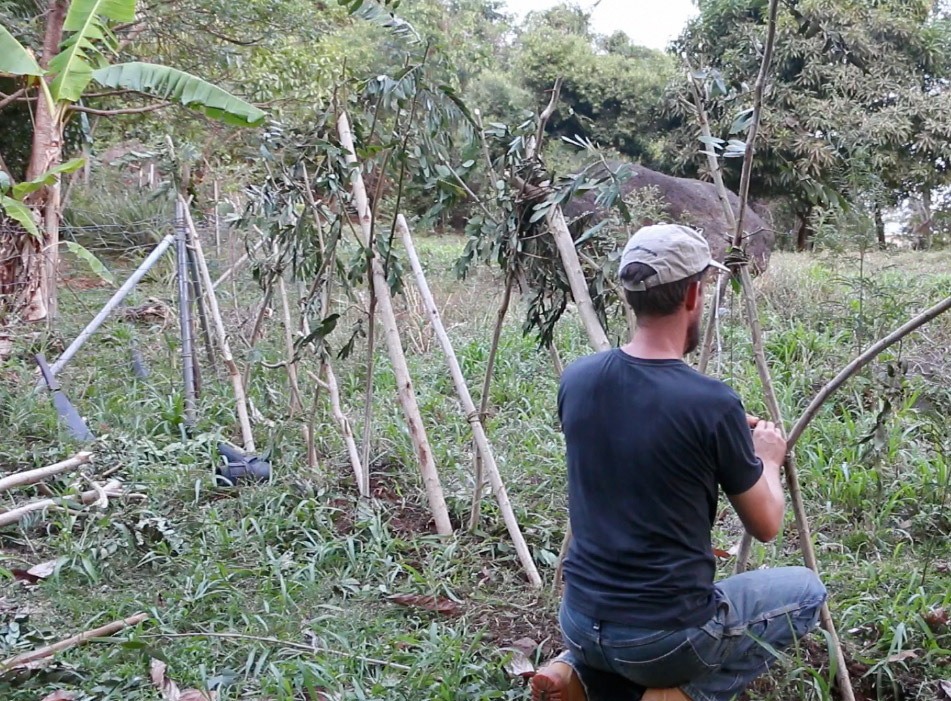
However, Gliricidia is not much of an edible.
Though Ken Fern reports “The flowers of Gliricidia are edible when cooked,” and also states “the whole plant is a folk remedy for various conditions such as but not limited to colds, cough, fever, headache, bruises, burns, rheumatism, ulcers, and wounds,” he additionally shares “it can also be used as a rodenticide and general pesticide. The seeds, in particular, can be used as rat poison.”
Great for compost. Great for nitrogen fixation. Great for a fast barrier. Not good for food.
I will certainly use it here and there, and rebuild an interlocked system like the one above so I can observe its growth over time, but I would like to get more food production. The great benefit of Gliricidia is that it’s a wonderful fodder plant for goats, as well as being an excellent source of green material for your compost.
There are other “jam it in the ground!” species that work well to make barriers, such as aralia and gumbo limbo.
Check out this gumbo limbo fence image from ProjectNoah.org:
Gumbo limbo can be used to make incense, but that doesn’t fill the stomach. It looks amazing, though, and I am rather sentimental about the tree since I grew up with it in South Florida.
Another “stick in the ground” option which actually produces edible fruit is Spondius purpurea, the purple mombin. You can see orchards of it here:
All you need to do is stick branches in the ground and they root and fruit. If you planted them tightly, they would probably keep out sheep, if not dogs.
Another potential edible hedge option for the tropics is Pandanas utilis.
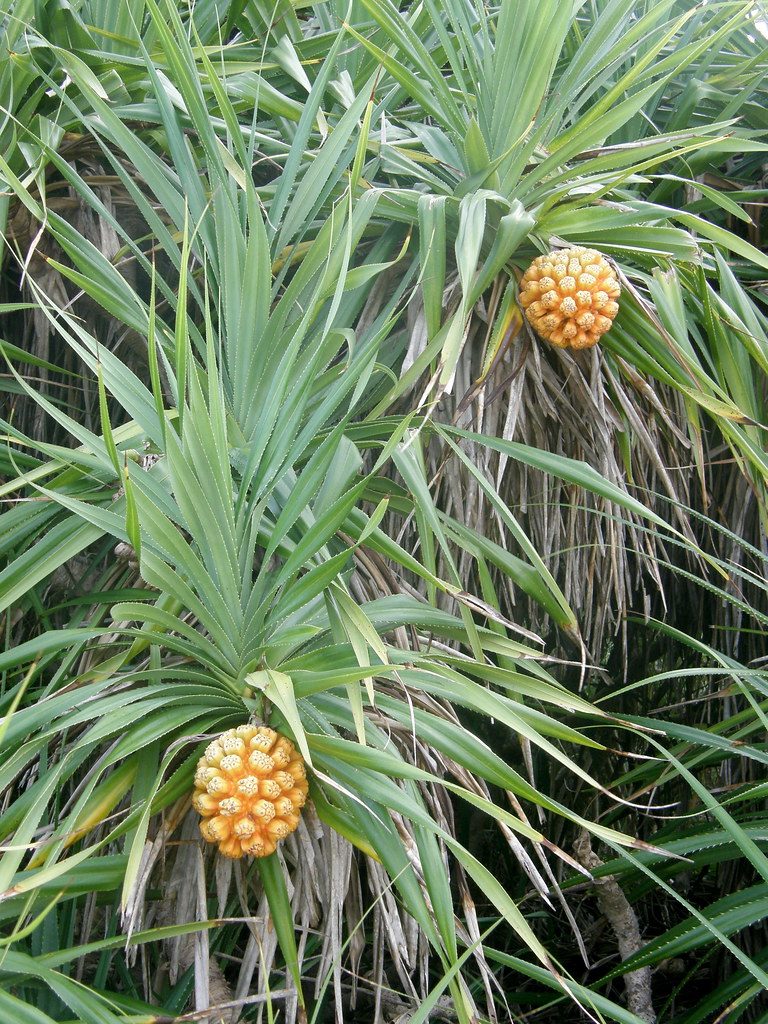
Pandanas is highly prized for basket making, as well as for its strange fruit and the seeds, which can be roasted and eaten like a nut.
It’s a bit open at the bottom as it grows, however.
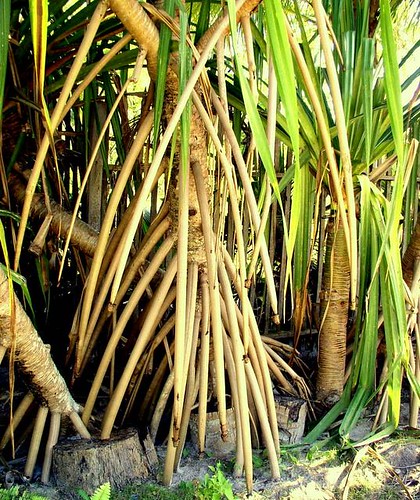
Pandanas, AKA screwpine, would probably be a good selection to mix in with other species. Perhaps you could grow pineapples around the base. to thicken up the barrier.
Yet another good option could be mulberries. They prune easily and become quite dense. Acerola cherries are another good one, as they get very bushy if kept pruned.
I once designed a subtropical “fruit tree guild” for a small space. Something like this would also work for an edible hedge.
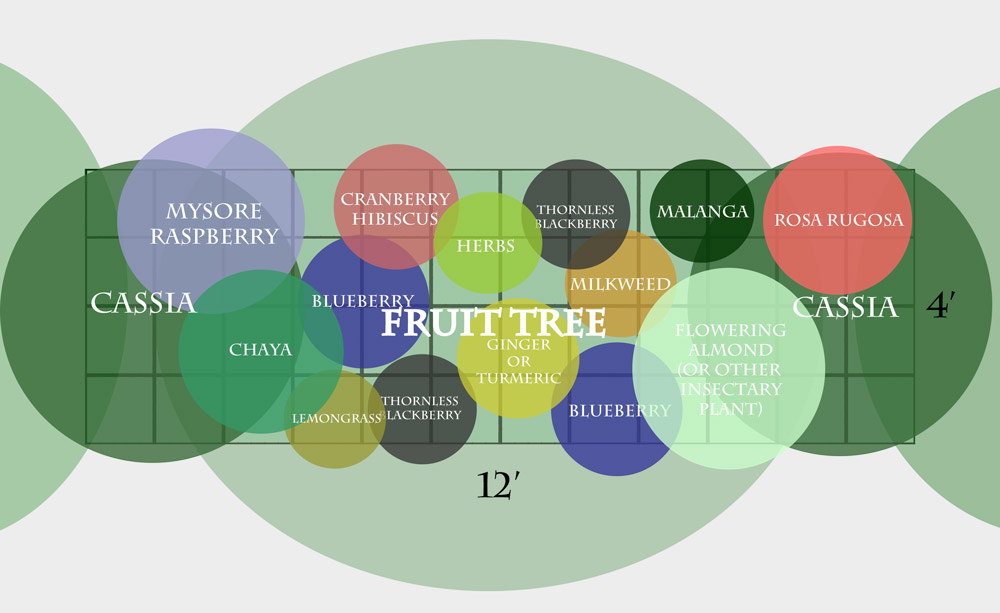
The cassias were added for nitrogen fixation. Their spot could easily be replaced with Gliricidia or Leucaena or any number of other tropical leguminous species.
Or I could just plant a hedge of citrus:
Or, more amazingly, a hedge of coffee:
Pomegranates are another good hedge option. As GrowOrganic.com shares:
“Whether you have a farm that could use some hedges as windbreaks, or a large garden that needs hedgy walls to create garden rooms, look to the drama of the pomegranate. Imagine the glossy hedges, studded first with the scarlet flowers, and then with the distinctive fruit. Plant the pomegranates 6’-9’ apart. The shrubs will spread their branches, and suckers will also grow between the original plantings, to form a hedge.”
I grew dwarf pomegranates from seed and they rapidly fruited.
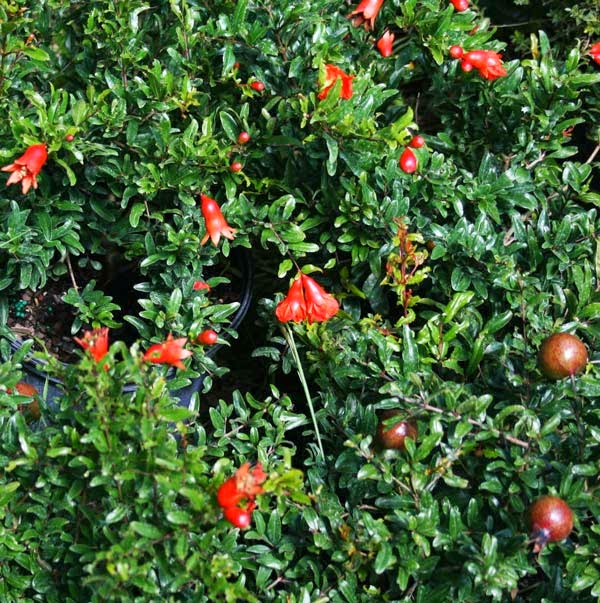
The larger trees are also quite easy to propagate. I think it’s time to go buy a huge, expensive fruit from the store, then plant all the seeds! 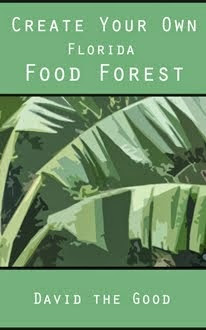 I visited a friend last week who had done just that, growing his own beautiful variety of pomegranate from the seeds of a “Wonderful” he had planted some years before.
I visited a friend last week who had done just that, growing his own beautiful variety of pomegranate from the seeds of a “Wonderful” he had planted some years before.
Since I have 740 feet of property line, it makes sense to do a bit of everything. I could put in a section of gumbo limbo, some aralia, some Gliricidia, some citrus, some coffee, some mangoes, some mixed plantings and whatever else I find interesting.
One of the best things about gardening is the potential for experimentation. Why not plant some hedges straight up and others interlocked on the diagonal? Other sections can be a wide mix of edible and useful species. An edible hedge can act like a 2D food forest, providing a long mix of species and the productive “edge” always raved over by permaculture practitioners.
As I plant and grow, I will see what edible hedges work well in my climate and which do not – and of course, I will keep you all updated. I hope you got a few good edible hedge ideas from today’s post. There’s a ton of info out there, but the very best way to learn is by getting out in your yard and planting.
Enjoy this post? Pin it on Pinterest!
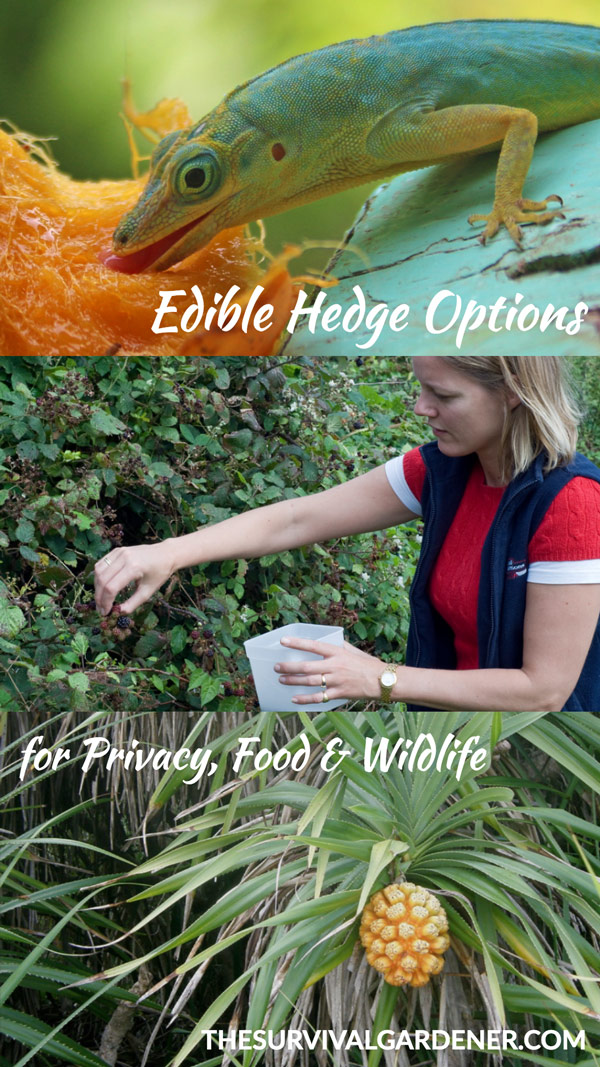
Photo credits:
“Pick the large ripe blackberries”by Lars Plougmann is licensed under CC BY-SA 2.0
“Pandanus fascicularis – Prop Roots”by smallislander is licensed under CC BY-NC-SA 2.0
“#5036 thatch screw pine (アダン)”by Nemo’s great uncle is licensed under CC BY-NC-SA 2.0

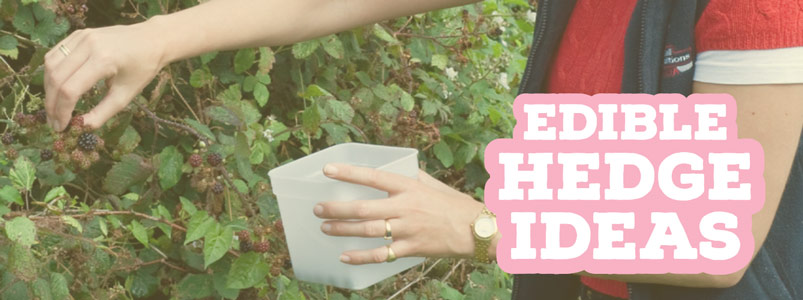
4 comments
Do you have any experience with traditional English hedge laying? It seems like a great way to create a strong animal barrier, but would any fruiting shrubs be compatible?
[…] post Creating A Food Forest Style Edible Hedge appeared first on The Survival […]
Seeing this post at a great time, as I’m currently fencing in half of our three acre property; which was expensive. A living hedge or Fedge would be awesome and something I considered doing with Mulberry because they are easy to propagate. Wind, especially this time of year, is bad here and has caused a lot of damage to fruit tress, shrubs and herbs over the years. A fast growing wind barrier is more what I need but nothing too invasive.
[…] Start edible hedge/food forest. […]
Comments are closed.